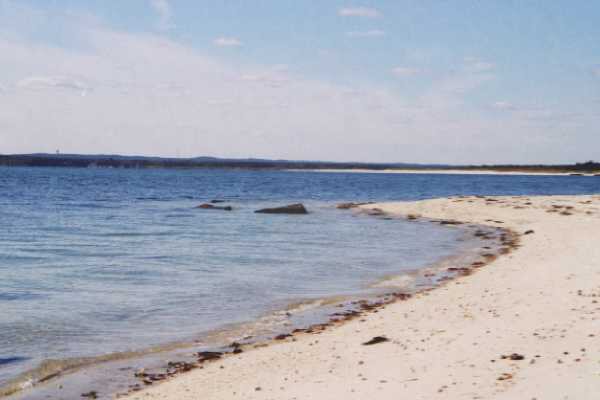August is National Water Quality Month! If you’ve been paying attention to our social media pages for the last few weeks, then you hopefully know that already. We care an awful lot about water quality here at the Long Island Pine Barrens Society, and you may recall a blog post we did last year for the same purpose. This year, we want to highlight a few alternative ways you can work to improve water quality on Long Island.
Lawns use up an immense amount of water. During the summer, an estimated 70% of water pumped during peak hours is used to water lawns. This intense overuse inevitably leads to a lot of wasted water, which has led to legislation to help combat this. Most recently, the Town of Southold passed a law requiring new sprinklers to have smart controllers and rain sensors, which will limit their use in the aftermath of sufficient rainfall. This is a good step forward, but there are a few other steps homeowners can take to ensure they use water as efficiently as possible.
First, setting up a rain barrel is a great way to collect water for gardening or for your lawn. While rainwater is not necessarily the safest for drinking, it’s perfect for the purpose of landscaping, and will limit the amount of water that shows up on your water bill. Not only does this reduce waste, but it also means your dollar is being used more efficiently. The water you pay for is prioritized for indoor use, while nature provides what you need for your yard.
Then, there’s a more radical solution: abandon your lawn! Or, more accurately: prioritize native plants. Rather than planting exotic, invasive species in your yard or garden, do some research on the many beautiful native species Long Island possesses. Planting these not only supports the local fauna (as songbirds and butterflies have coevolved with native plants and thus are more likely to appear in a yard that has plenty of them), but also will reduce the need to water your lawn. Native plants have evolved here on Long Island, and so the amount of water they need is usually provided by the local water cycle. As opposed to imported plants, natives are well-adapted to the average rainfall of Long Island, meaning you needn’t spend the money or the water installing sprinklers.
Besides lawns, there’s the possibility that you’re thinking about installing a pool. Whether aboveground or in-ground, we’d urge you to pause and consider. If you’re only going to use it sparingly, then it may be better to not have one at all. Besides the intense amount of water used in filling and refilling a pool, you’ll save plenty of money on the installation and/or set-up, along with the electricity to run the filter and the chemical supplies you have to purchase. Going to the beach if you’re looking to swim is not only a great alternative, but can also serve as a gateway to other fun activities that beaches allow for and pools typically don’t.
Ultimately, properly celebrating National Water Quality Month means considering how you use your water, and how you might do so more responsibly. Deciding whether you need that pool, or need to plant that invasive plant, will help you figure out if your practices are helping or hindering the work being done to ensure Long Island maintains its high standard of water quality. While it’s important for wide-scale legislative action to occur, especially to regulate the actions of corporations and other large entities, individuals can also take responsibility for their actions. If even a small percentage of the population of Long Island worked to implement more conscientious water practices, the whole of the island would benefit. And then we’d truly have a happy National Water Quality Month!
By Travis Cutter, Long Island Pine Barrens Society


